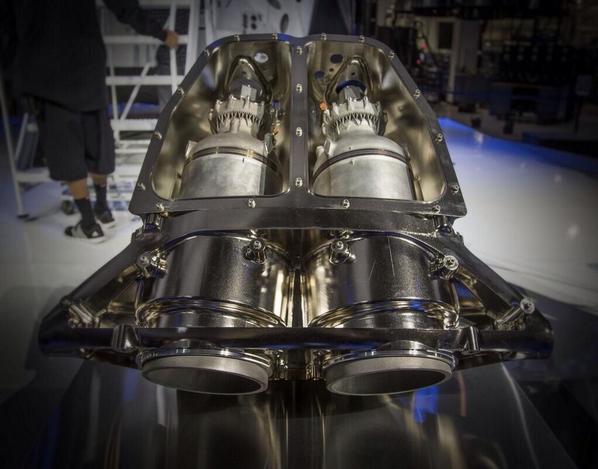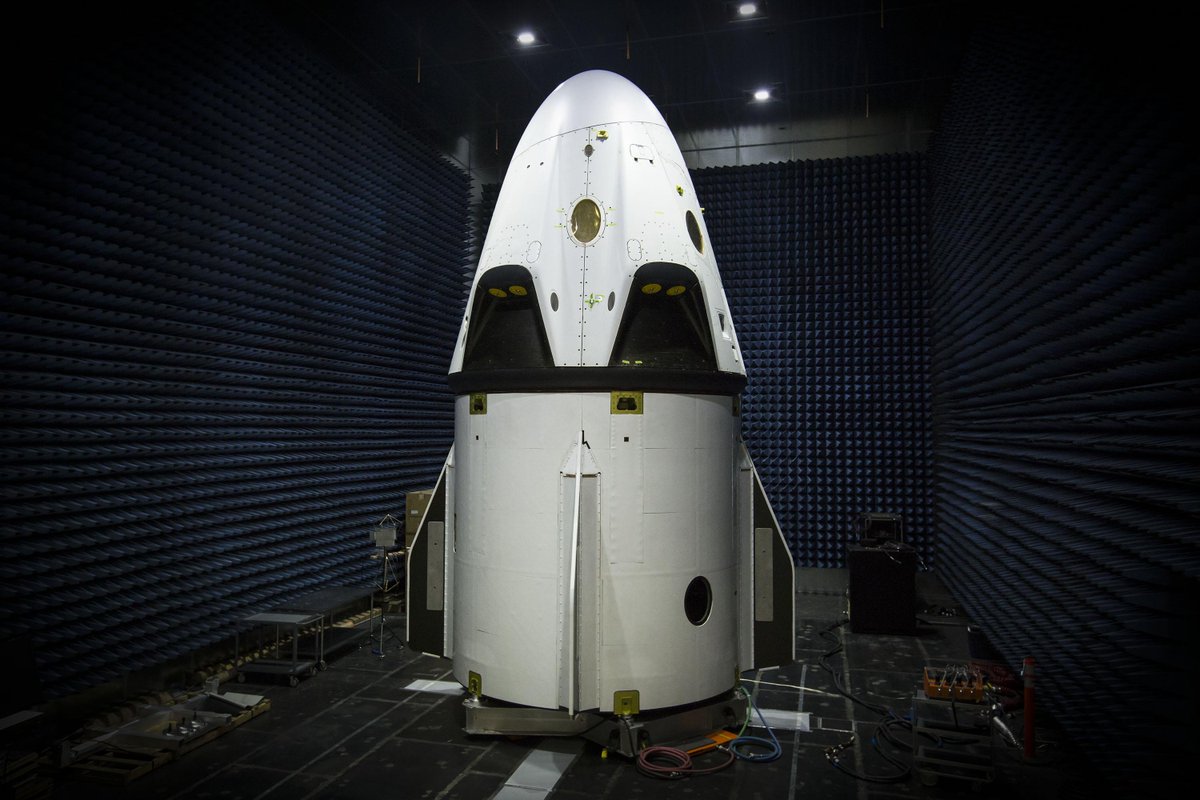The Dragon V2 pad launch abort has a date. This is part of certifying it for flying partner astronauts to ISS.
US, Canadian, Japanese, Russian and European crews will fly on the US Commercial Crew spacecraft.
Launch date: NET March 4, 2015
Launch time: TBD
This could move right if the 2 launches before it slip, DSCOVR and the dual-manifested ABS/SatMex (twin Boeing 702SP's going to geostationary orbit).
DSCOVR had a successful static fire yesterday and is on for February 8.
ABS/SatMex is NET February 17. It's the main slip candidate.
In a pad launch abort test the Dragon V2 and its finned cargo Trunk will be mounted on a truss on the KSC LC-40 launch pads transporter/Erector. This simulates it being atop a Falcon 9 launcher.
A signal simulating the failing launcher will trigger the launch abort computer, at which time Dragon V2's 8 SuperDraco launch abort/landing thrusters (16,400 lbf of thrust each) fire at full throttle. The SuperDraco's will then pull Dragon V2 and the Trunk away - reaching supersonic speeds within 5 seconds. The Trunk's fins provide stability throughout the burn, then the Trunk is jettisoned and Dragon V2 parachutes into the sea offshore and waits for ASR teams to arrive.
If successful, this Dragon V2 will be re-used for a full flight abort test later this year at SpaceX's Vandenberg AFB SLC-4E launch & landing facility. This will demo it's reusability.
Dragon V2 showing Trunk solar power arrays and stabilizer fins (from NASASpaceFlight.com)

Dragon V2 crew cabin

3D printed SuperDraco thruster pack (2 per)

US, Canadian, Japanese, Russian and European crews will fly on the US Commercial Crew spacecraft.
Launch date: NET March 4, 2015
Launch time: TBD
This could move right if the 2 launches before it slip, DSCOVR and the dual-manifested ABS/SatMex (twin Boeing 702SP's going to geostationary orbit).
DSCOVR had a successful static fire yesterday and is on for February 8.
ABS/SatMex is NET February 17. It's the main slip candidate.
In a pad launch abort test the Dragon V2 and its finned cargo Trunk will be mounted on a truss on the KSC LC-40 launch pads transporter/Erector. This simulates it being atop a Falcon 9 launcher.
A signal simulating the failing launcher will trigger the launch abort computer, at which time Dragon V2's 8 SuperDraco launch abort/landing thrusters (16,400 lbf of thrust each) fire at full throttle. The SuperDraco's will then pull Dragon V2 and the Trunk away - reaching supersonic speeds within 5 seconds. The Trunk's fins provide stability throughout the burn, then the Trunk is jettisoned and Dragon V2 parachutes into the sea offshore and waits for ASR teams to arrive.
If successful, this Dragon V2 will be re-used for a full flight abort test later this year at SpaceX's Vandenberg AFB SLC-4E launch & landing facility. This will demo it's reusability.
Dragon V2 showing Trunk solar power arrays and stabilizer fins (from NASASpaceFlight.com)

Dragon V2 crew cabin

3D printed SuperDraco thruster pack (2 per)






Comment